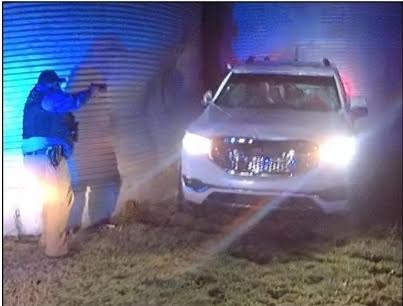‘Take me back to Muhlenberg County’ for the fishing, of course
Published 12:00 am Sunday, July 28, 2002
John Denvers song that pleaded to take me back to Muhlenberg County rings in my head every time I set out to the Peabody Wildlife Management Area. I have to admit, though, that I am thinking about what has been left behind rather than what Mr. Peabodys coal train … hauled away. The system of strip pits that have become waterways through the former coal mining area now creates a fishery that produces prime bluegill, crappie, bass and catfish. The reclamation acreage likewise is home to all species of Kentuckys upland and large game, waterfowl and fur bearers. The best part is that its available to us all through a modestly priced permit. My passion for this area, aside from simply watching the magnificent Canada geese that seasonally move through, is to take a cage of crickets or a box of wax worms and a pole to lay siege to the bluegill. My last stop before heading into a favored spot in the refuge is Jenkins Bait shop in Rochester, where I buy bait, swap a few stories and get the latest advice on fishing. Crickets are measured for sale in a glass test tube that would likely hold three-fourths cup of water. They are kept in a screen-topped wooden bin with a litter of cardboard egg cartons on the bottom to give them hiding places. They are fed a meal-like food and watered in a shallow tray. When they are sold for bait, they are scooped up and dumped down a funnel into the tube, measured and placed in a wire cage with a plastic collar called a cricket box. The plastic, oddly enough, is too slick for them to crawl out and they never think of hopping out well, almost never. Wax worms are bee larvae, bred and raised commercially for bait. They are a white, milky colored, segmented larvae held in saw dust and refrigerated to keep them sluggish until you are ready to fish. They have a tough hide, which makes them good at staying on a hook when lightning fast nippers try to strip them and run. For me, these are the premier bluegill baits. A few miles from Rochester, I turn right on the winding gravel and cinder roads at the edges of Butler, Ohio and Muhlenberg counties until arriving at waters edge on one of the many strip-pit lakes created when the great cranes stripped out the seams of coal. The lakes vary in size from a few acres to say 50 or more acres. They vary in depth from shallow, murky ponds to deep rock pits with blue-green water. I usually use a small jonboat launched at a gravel ramp that can usually be found at most lakes. Others use canoes, mini pontoons, float tubes or fish from the bank in lawn chairs comfortably nestled under shady trees. When the bluegill are aggressive, you slip on a fat wax worm and in less time than it takes to bait the hook, the bluegill will have it and be gone. Many times when the cork touches the water it looks like it just keeps sinking because a scrappy bluegill takes the bait as soon as it hits the water and runs back to hide. I like fishing the corners first and then begin cruising the bank for a pocket of fish. Weed and reed beds make great habitat for some very large bluegill. The reeds tower above the waterline in some places and adds a bit of mystery to the area. You can be surrounded in a sea of waving greenery with unknown splashes and movements echoing through the dense stems and gnarly roots. The reeds turn out to be the best spots to catch red ear sunfish, long ear, sunfish, bluegill and a few varieties of perch that I am not completely sure of. The Peabody Wildlife Management is open to all and provides a scenic escape into a combination or prairie and wetlands where Kentuckys wild heritage dwells in relative harmony with nature and the technology of man. Daddy, wont you take me back to Muhlenberg County, down by the Green River, its paradise outdoors. Here is the fishing report. Barren River. Bass, there are some scattered catches off points and channels on plastic worms. Bluegill are good on rocky banks and tree tops. Crappie are slow. Slowing action reported on white bass or hybrids with some night time catches on crawlers off deep flats. The lake is clear, 85 degrees and stable. Kentucky Lake. Black bass are fair to good. As of Thursday, bass were hitting slow working crankbaits near the weeds. In the grass, the rattletrap was working, on the points the worm was working, and in the tree tops, buzz baits were taking a few. Crappie are slow and deep. White bass seem to be ganging up on the flats and hitting trolled spoons and deep runners. Catfish are good on trot lines on cut bait and on stink bait on rods and reels along the rip rap. The lake is clear, 359.1 and 84 degrees. Lake Barkley is just about a ditto of Kentucky. White bass have been seen in some small jumps in the lower portions of the lake. Barkley is clear, 359 and 85 degrees.






